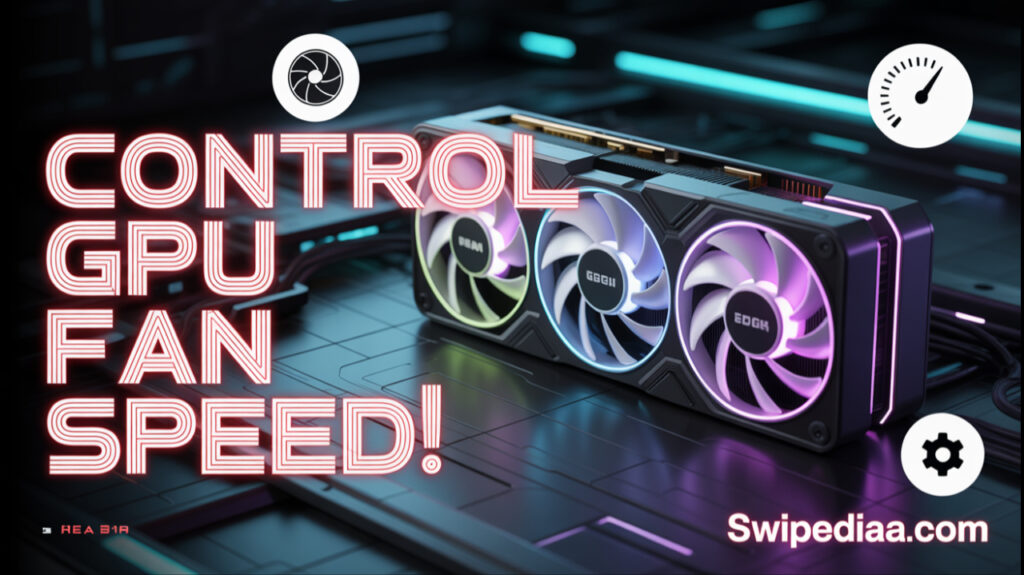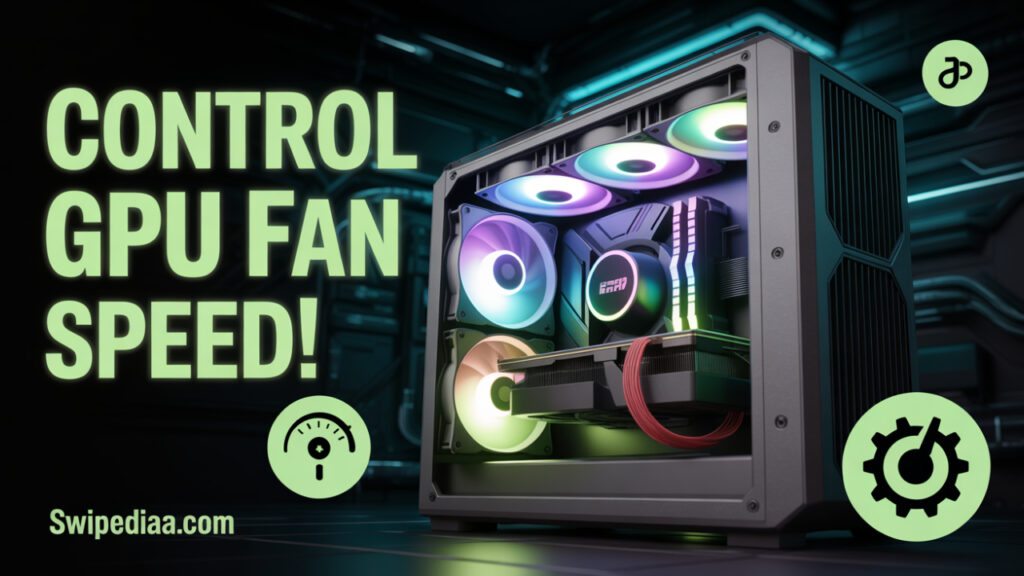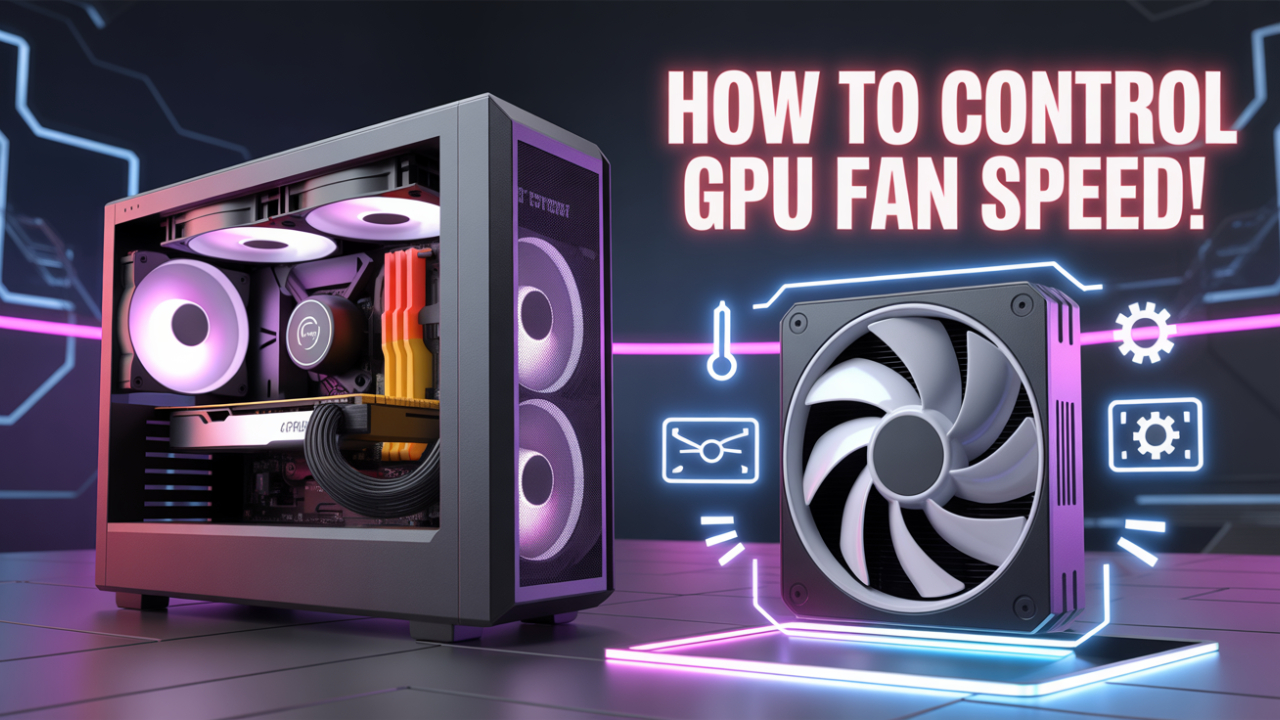Controlling your GPU fan speed is essential for maintaining optimal graphics card performance, ensuring hardware longevity, and minimizing system noise. Whether you’re gaming, video editing, or mining cryptocurrency, the ability to adjust GPU fan speed gives you control over temperature management and system efficiency. In this guide, we will explain how to control GPU fan speed using different tools and techniques, especially for users running Windows 10.
What is GPU Fan Speed?
GPU fan speed refers to how fast your graphics card fan spins, typically measured in RPM (Revolutions Per Minute). When the GPU is under heavy load, like during gaming or rendering, the temperature rises, causing the fans to spin faster to keep it cool.
Fan speed is directly tied to your GPU temperature and is controlled automatically by the graphics card’s firmware. However, in many cases, you can manually adjust or control GPU fan speed for better cooling and noise control.

Why Should You Control GPU Fan Speed?
Controlling the GPU fan speed provides several benefits:
- Prevent Overheating: Avoid GPU throttling and performance loss
- Extend Lifespan: Maintain optimal temperature for long-term durability
- Reduce Noise: Fan noise can be reduced by setting a smarter fan curve
- Customize Performance: Tailor your cooling needs based on your workload
How to Control GPU Fan Speed (Step-by-Step)
Here are the top methods to control GPU fan speed effectively in 2025:
Use Manufacturer Software
Most GPU brands offer built-in fan control settings:
NVIDIA GeForce Experience:
- Install GeForce Experience
- Open NVIDIA Control Panel > Manage 3D settings
- Some cards support fan control under Performance > Device Settings
AMD Radeon Software:
- Open AMD Radeon Settings
- Navigate to Performance > Tuning
- Enable “Manual” fan tuning
- Set a custom fan curve or specific fan speed
Use MSI Afterburner (Recommended for All GPUs)
MSI Afterburner is a powerful, free utility used to:
- Monitor GPU temperature
- Create a custom fan curve
- Enable or disable automatic fan control
Steps:
- Download and install MSI Afterburner
- Click on the settings (gear icon)
- Enable “User-defined software automatic fan control”
- Adjust the fan curve to control GPU cooling based on temperature
Use EVGA Precision X1 (For EVGA Users)
EVGA’s utility offers GPU overclocking and fan control:
- Download EVGA Precision X1
- Select your GPU
- Use the fan control panel to adjust speed manually or set a custom curve
BIOS/UEFI Fan Control (Advanced Option)
Some high-end motherboards allow direct control of GPU fans from BIOS:
- Reboot and enter BIOS (usually by pressing DEL or F2)
- Look for Hardware Monitor > Fan Control
- Adjust the GPU fan settings (if supported)
Warning: This option is recommended only for advanced users.

How to Monitor GPU Fan Speed
To fine-tune your setup, you need to monitor GPU fan speed and temperature using these tools:
- GPU-Z: Displays real-time GPU data
- HWMonitor: Shows temps, fan speed, voltage
- HWiNFO: Advanced system diagnostics and fan RPM logging
Useful keywords: check GPU temperature, GPU monitoring tool, real-time GPU RPM.
Common Issues with GPU Fan Speed
Here are frequent problems users face and how to fix them:
- Fan not spinning?: Some fans don’t spin until a certain temperature (like 60°C). Set a manual speed in MSI Afterburner.
- Fan speed stuck at 100%?: Reset to auto mode or update GPU drivers.
- Fan too loud?: Create a custom curve to reduce noise at idle.
Safety Tips for Adjusting Fan Speed
- Avoid 100% fan speed at all times to prevent fan wear
- Set temperature-based fan curves for balanced performance
- Don’t disable automatic fan control unless needed
- Update GPU drivers regularly to ensure compatibility

What Should GPU Fan Speed Be At?
- Idle: 20% – 40% (or 800–1200 RPM)
- Moderate load: 50% – 70% (1300–2500 RPM)
- Full load (gaming): 70% – 100% (2500–4000 RPM)
Always monitor your GPU temperature, and adjust fan speed to keep it below 85°C during gaming.
FAQs About Controlling GPU Fan Speed
How do I control the fan speed on my GPU?
You can use tools like MSI Afterburner, AMD Radeon Software, or NVIDIA Control Panel. These allow you to set custom fan curves and manually adjust fan RPM.
Should I control the GPU fan speed?
Yes, especially if you experience overheating, excessive noise, or want better control over your system’s cooling. Manual control lets you fine-tune performance and reduce thermal stress.
How to control GPU fan speed in Windows 10?
In Windows 10, download a fan control tool like MSI Afterburner or use manufacturer-specific software like AMD Radeon Settings or NVIDIA Control Panel. These apps integrate seamlessly with Windows.
What should GPU fan speed be at?
It depends on usage. At idle, 20–40% fan speed is normal. During gaming or rendering, it can go up to 100%. Aim to keep GPU temps below 85°C.
Final Thoughts
Controlling your GPU fan speed can greatly improve your PC’s performance, temperature control, and noise levels. With tools like MSI Afterburner and built-in manufacturer software, you can easily set up custom fan curves, monitor real-time RPM, and ensure your system runs cooler and quieter.
Mastering how to control GPU fan speed is a simple but powerful way to enhance your PC experience. Make sure to monitor your system, adjust settings wisely, and enjoy the performance boost!
